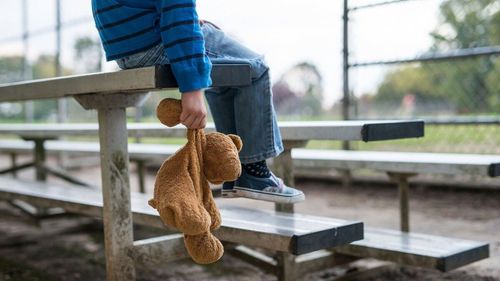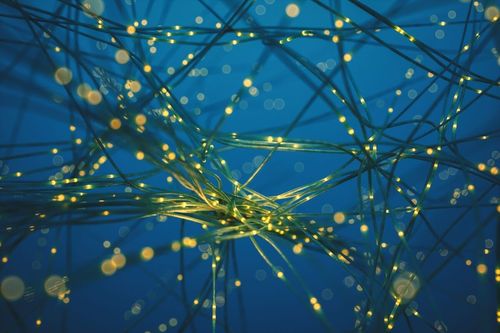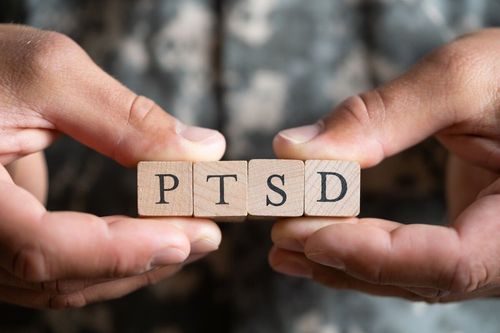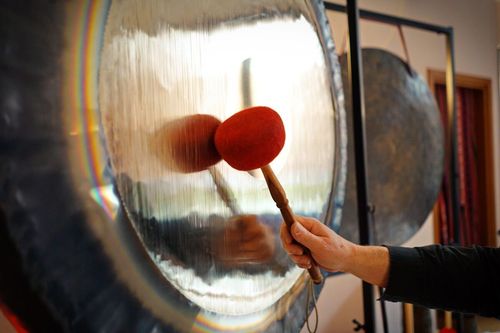No, you don't have to heal your inner child to be happy. First, you should ask yourself whether your inner child is wounded at all – because that's not the case for everyone.
If there is an injury, it is crucial to determine whether it affects an area that negatively influences your current life: Does it incapacitate you, block you, or restrict you? If the injury has no noticeable effect on your life, healing it makes little sense. Instead, you should invest your energy and time in areas that actually improve the quality of your life.
My name is Rico Brunner, energy field therapist since 1998, and in this article I explain how important it is to heal your inner child in order to live a truly happy life.
How important is it to heal your inner child to be happy?
No, you don't have to heal your inner child to be happy. First, you should ask yourself whether your inner child is wounded at all – because that's not the case for everyone.
If there is an injury, it is crucial to determine whether it affects an area that negatively influences your current life: Does it incapacitate you, block you, or restrict you? If the injury has no noticeable effect on your life, healing it makes little sense. Instead, you should invest your energy and time in areas that actually improve the quality of your life.
How do I know if my inner child is hurt and needs healing?
It's not always easy to recognise whether your inner child is hurt and needs healing. You should ask yourself: ‘Do I have behavioural or emotional problems that have been with me since childhood?’ Insecurities that persist can indicate injuries to the inner child, for example, if a sense of security or inner safety could not be established at the time.
What is important is that this hurt has a strong impact on your current life. The healing of the inner child can bring about great changes – sometimes even those that turn your life upside-down. For instance, someone who feels comfortable with their adjustment could become maladjusted after healing and thus experience problems in functioning relationships or at work.
You should only heal your inner child if you are truly suffering and really need the change. Otherwise, you risk ‘fixing’ something that wasn't a problem in your life to begin with. However, if the suffering is severe, the changes are usually warranted and end up being positive, even though they may be challenging at first.
How can you heal your inner child?
You can heal your inner child by learning to be there for yourself. Inner wounds occur because you felt left alone or overwhelmed as a child. Healing means putting the focus on yourself, supporting yourself and not letting yourself down.
It is important to take small steps, for example by facing challenges without overwhelming yourself – such as overcoming maladjustment or learning to deal with conflicts better.
However, this process takes time. Unhealed inner wounds that persist into adulthood are often deeply rooted and cannot be healed in a few months. Patience and persistence are crucial during this time.
How does the relationship to your parents influence the healing of your inner child?
In my opinion, the relationship with one's parents plays a subordinate role in the healing of the inner child. Wounds develop for two main reasons: either through external factors such as difficult parents, a stressful environment or traumatic experiences – or through internal weaknesses, where the necessary strength to deal with certain challenges is lacking.
Discussions with parents can be helpful if they are willing to delve into it in a supportive manner. But if this candidness is lacking, there is a risk of reopening and reinforcing old wounds through renewed rejection or misunderstanding.
It is therefore important to be mindful: support from parents can be helpful, but should not be forced at the expense of one's own healing.
Is it important to know when the injuries to the inner child occurred?
It is not crucial to know whether the injuries occurred in childhood or later. Most wounds to the inner child are inflicted in childhood, especially as a result of experiences such as betrayal of trust or the feeling of being left alone / negligence. While knowing when and where the wounds originated can bring insight and relief, it does not heal the wounds. The focus should be on recognising the wounds, acknowledging them and working on them step by step to resolve the sense of being hurt.
What are the first steps to help heal the inner child?
My approach begins by checking in the energy field whether the wounds actually lie with the inner child. If so, I work to repair these wounds directly in the energy field. In my experience, this is often the faster and more precise way, since the impaired function can be hereby restored systematically. Working independently on the inner child can also be useful, but it carries the risk of stirring up more than what is necessary.
What exactly is the inner child and what role does it play?
For me, the inner child is a comprehensive concept that reflects our basic levels of trust. These include self-confidence, basic trust, self-esteem, the ability to set boundaries, the sense of one's own self and standing up for one's own needs. An intact inner child means that all these qualities are fully developed and fully functional.
How is the wounded inner child related to a wounded energy field?
The wounded inner child can be considered as an area in a person's energy field. In this sense, the annual rings show whether there were difficult phases in the early years of a person's childhood. Therefore, the wounded inner child is a synonym for wounded energy fields as they take on the function of the inner child.
Healing the Inner Child Yourself – 10 Tips from an Energy Field Perspective
Healing your inner child doesn’t mean digging through old stories – it means giving yourself today the care and attention that may have been missing in your past. From the perspective of energy field therapy, it’s about integration, not perfection – and about developing a loving attitude toward yourself.
- Learn to truly see yourself: Many wounds arise because – like your parents once did – you don’t truly perceive yourself. Start consciously taking yourself seriously, feeling yourself, and becoming aware of your inner world. Seeing your inner child is already the first step toward healing.
- Acknowledge your uniqueness: Were you not seen as a child because you were “different”? Maybe you were sensitive, creative, or quiet – and never received recognition for that. Now you can tell yourself: “I’m okay just as I am.” Give yourself the appreciation you once missed.
- Don’t search only in the past: Healing happens now. It’s not necessary to dig up every memory. What counts is the presence of your awareness. Your inner child wants to be seen today – not analyzed, but accepted.
- Avoid self-judgment: You don’t have to do everything perfectly. If you notice yourself reacting emotionally, struggling with closeness, or needing to set boundaries – don’t judge yourself. Tell yourself: “I’m still on my way – and that’s okay.”
- Focus on your strength – not just your pain: Don’t fixate solely on wounds. Look at what’s already there: your courage, your energy, your strength. Healing also means activating inner resources – not just treating pain.
- Give yourself real time: Healing isn’t a sprint. It’s perfectly fine if your inner child needs months or even years. Pressure creates tension, patience creates relaxation – and only in relaxation can integration occur.
- Compassion for mistakes heals more than discipline: Allow yourself to make mistakes. Let yourself stumble. The more lovingly you respond to setbacks, the more your inner child can breathe – because you’ve stopped being hard on yourself.
- Accept imperfection: Sometimes you’ll notice: “Right now I’m not capable of being in a relationship,” or “I feel overwhelmed.” Acceptance doesn’t mean giving up – it means acknowledging the truth. Only then can real change begin.
- Treat yourself like a real child: Imagine your inner child standing in front of you – unsure, overwhelmed, sad. What would you do? Scold them – or hold them? This compassionate stance heals more than any ritual.
- Trust in integration instead of constant correction: When your inner child is truly healed, it no longer stands out – because it has been fully integrated into your energy field. You don’t need to “work on it” all the time. Sometimes letting go is also an act of healing.
Conclusion
Healing your inner child is not about becoming someone new – it’s about finally becoming whole. The emotional wounds of childhood don’t simply disappear with time; they remain in the background, influencing how we feel, react, and connect with others.
When you begin to care for your inner child with love, patience, and understanding, you create space for deep transformation. You stop fighting yourself. Instead, you begin to support yourself – in a way that might never have happened before.
This healing doesn't demand perfection, but honesty. It invites you to meet yourself where you are and gently grow from there. Over time, you will notice more clarity, emotional strength, and stability in your everyday life. And most importantly: you reconnect with a part of yourself that is full of vitality, joy, and trust – the part that was always waiting to be seen and loved.
The journey to happiness often begins with the simple, courageous act of turning inward – and saying yes to your own story.






